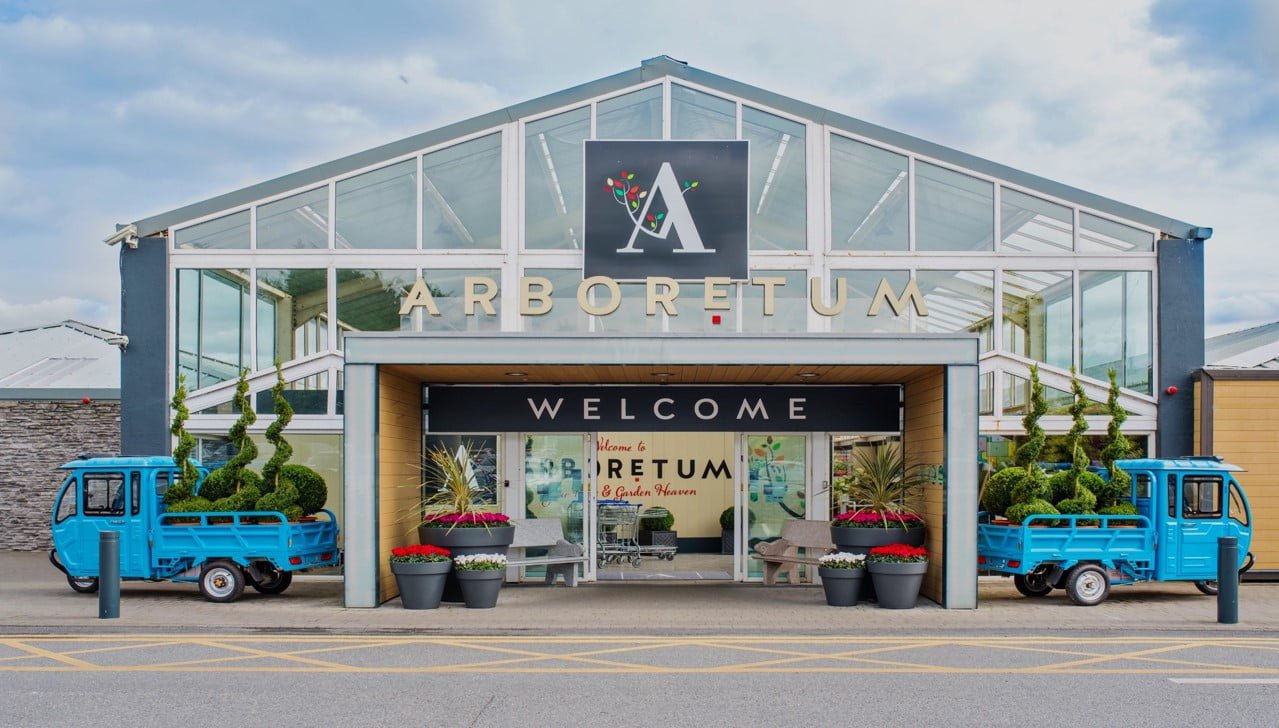Champions of biodiversity, The Carlow Garden Trail and its members place strong emphasis on biodiversity and how better to encourage this than by embracing native trees.
Ger Heary of Arboretum leads the way, highlighting the invaluable contributions of these indigenous species to our ecosystem.

From the majestic Silver Birch, steeped in Celtic lore and medicinal properties, to the enduring presence of the Green Beech, a stalwart of the Irish landscape, and the regal Common Oak, Ger highlights the rich tapestry of trees that can adorn our gardens. In this blog Ger also provides helpful tips on growing trees.
At Arboretum, we champion native plants and trees in recognition of the important role they play in supporting biodiversity. We’ve picked out some of our favourite native (or almost native!) trees, which are almost always in stock.
Betula Pendula – Silver Birch
The Silver Birch (Beith gheal in Irish) is a beautiful native Irish tree. It is easily identifiable thanks to its silver-coloured bark with black markings, which peels off in parts, its slender, drooping twigs, small heart-shaped, serrated leaves (yellow in autumn) and the appearance of catkins in spring.
The silver birch was a symbol of renewal and purification to the ancient Celts. People would burn bundles of birch twigs to drive out the spirits of the old year at Samhain (what we now know as Halloween). Sap from the silver birch is a source of vitamins, minerals and sugars and is considered a good detoxifier.
The silver birch is a crucial component of the local environment, providing a home to a diverse array of insects and birds. Its delicate canopy allows for the growth of woodland flowers beneath it. As the tree has shallow roots, it‘s important to plant it away from buildings and paved surfaces. It is an excellent choice as a specimen tree and would be a lovely part of a small grove within a medium or large-sized garden.
Fagus Sylvatica – Green Beech
Although beech (Fagus sylvatica L.) is not a native broadleaf species in Ireland, it has been here a long time and is so abundant as to be almost considered so. It was first introduced to Ireland in the late 16th century and is very much a part of the landscape. The beech is a very large deciduous tree with a dense broad head, distinctive wavy-edged leaves and attractive smooth, grey bark. The spectacular ‘Dark Hedges’ in County Antrim that featured in the hit TV series Game of Thrones is a stunning example of a mature beech avenue. Unpruned, its branches reach out and arch forming a beautiful shape.
Because of the sheer size of the mature tree, it’s not suitable for every garden, but it is suitable for hedging and, if pruned, will retain its golden brown autumn leaves through winter, making it almost as good as an evergreen hedge for privacy and shelter.
Beech makes excellent timber for carpentry and firewood. In Celtic mythology, the beech was thought to have medicinal properties. It is also associated with knowledge and wisdom.
Beech will grow on a wide range of soils and it is a very thirsty tree however it cannot tolerate wet or water-logged soils.
Quercus Robur – Common or Pedunculate Oak
The Common Oak (Dair ghallda in Irish) is a tall, deciduous, and very long-lived tree. It has a broad, rounded crown. The leathery, distinctive lobed leaves are deep green, turning reddish-khaki in autumn. One way to distinguish it from the Sessile (or Irish) oak is by the very short leaf stalk and the acorns growing on stalks (in Sessiles, they sit directly on the twigs).
The Common Oak provides a fantastic habitat for wildlife. Its leaves serve as nourishment for various insects, which in turn provide food for birds. The acorns produced by this tree are a vital source of winter sustenance for jays, squirrels, and badgers. In the past, wild boar and pigs also relied on these acorns for food. Additionally, the dead leaves of the Common Oak decay quickly, providing sustenance for fungi and insects alike.
Known as the ‘King of the Forest’, the oak is associated with royalty. Ancient British kings wore crowns of oak leaves.
Because of over-harvesting thanks to its excellent timber, the truly native oak can be hard to find, though there are small woods in most counties – an excellent reason to plant one – and with a lifespan of up to 1,000 years, planting an oak is an investment in the distant future.

